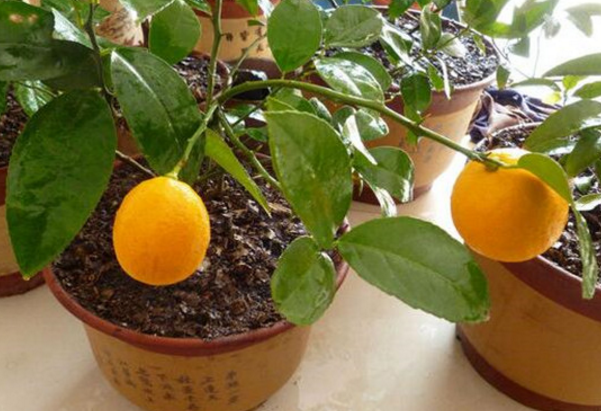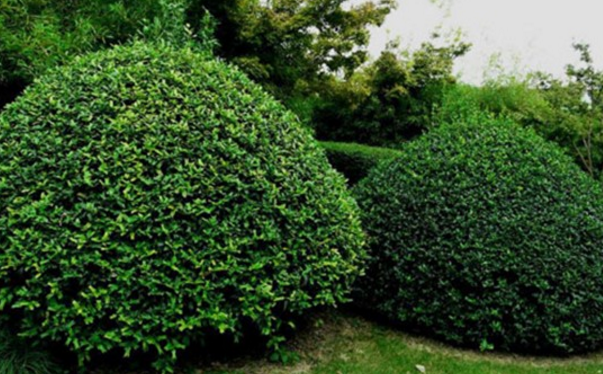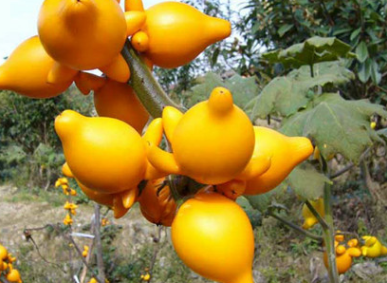What are the reasons why the cutting methods of lemon trees only blossom but do not bear fruit?
Lemon taste more sour, more fruit juice, rich aroma, but not very suitable for consumption, generally as seasoning, can cook, as well as cosmetics, drinks and so on. Vitamin C is rich and good for the body. It is the nemesis of scurvy.

Cutting methods of lemon
The most rapid and direct propagation method of lemon is cutting, and the method is very simple and easy to learn.
1. The cutting time of lemon
The most suitable cutting time is late May, September can also be carried out, but after all into autumn, the air humidity is very low, we need to pay attention to the regulation of water. If the lemons raised by florists are covered with plastic film, they can also be cut in spring or winter.
2. Lemon cutting utensils
You can choose flowerpots, disposable cups, or other suitable utensils, but remember to make the bottom permeable.
3. The medium of lemon cuttage
The most suitable is the sandy soil with good air permeability and good drainage. The soil should be disinfected in advance, but do not apply fertilizer.
4. Cutting branches of lemon
Cut off mature and strong branches and grow for about a year, too young is not good, lack of nutrients, and easy to rot. The length of the cuttings is about 15 centimeters, then cut off most of the leaves on the branches, leaving only the top two or three pieces.
5. The method of lemon cutting.
Insert the medium into a small hole with a cotton swab, then insert the branch into the hole, insert about one or two nodes, and then fill the hole with the medium.
6. Management after lemon cuttage
The temperature is about 25 ℃, and it will sprout in about 40 days, and gradually make it see the light and enter the normal management.
What are the reasons why lemon trees only blossom but do not bear fruit?
1. Buckle water before flowering
In order to prevent the growth of summer shoots, accumulate nutrients and promote the formation of flower buds, potted lemons were watered before the End of Heat. The specific approach is that the water supply to potted lemons gradually decreased in the first ten days of the End of Heat; the water supply was stopped in the first five days, and the water in the basin soil evaporated in large quantities and dried in the basin soil; because of the lack of water in the root system, the branches and leaves lost water, and the leaves withered and curled. In order to prevent leaf dehydration, water can be sprayed on the leaf surface in the morning and evening, and a small amount of water can be sprayed on the basin soil at the same time, so that the lemon is under the condition of drought and not dying, its axillary buds are expanding day by day, and the bud color changes from green to white. When most of the axillary buds turn from green to white, the "buckle water" to promote flowers is successful. At this time, it is necessary to restore the water supply to potted lemons in time.
2. Protect flowers and fruits
After lemon blossoms, in addition to applying thin fertilizer once a week, it is also necessary to thinning flowers and fruits. First remove part of the buds before the flowers bloom; after the flowers are shedding and setting fruit, then remove some misplaced young fruits, in order to reduce the consumption of nutrients, let the limited nutrients concentrate on supplying the retained flowers and fruits, and make the fruits grow bigger and better. During the period of fruit growth, if the fertilizer and water are sufficient and the plant nutrition is good, some branches will sprout new shoots, and the growth of new shoots will inevitably divert some nutrients and affect the growth of the fruit. In order to preserve the fruit, the new shoots should be erased in time. When the fruit is yellow and ripe, stop fertilizing and reduce watering to keep the soil moist and slightly dry. If you continue to give too much fertilizer and water, the fruit will mature and fall early and shorten the viewing time.
3. Rational fertilization
Lemons like fertilizer, usually should apply more thin fertilizer. The plants were treated with rotten liquid fertilizer before sprouting, and then every 7-10 days with liquid fertilizer dominated by nitrogen fertilizer to promote the growth of branches and leaves and multiple spring shoots. After picking the heart every time, it is necessary to apply fertilizer in time to make the branches mature earlier. Lemon growth period, can sprinkle some cake fertilizer in the basin, so that each watering there are some fertilizer infiltrated into the soil to enhance fertility. After entering autumn, fertilization is reduced to avoid overnutrition of plants, promote autumn shoots, and compete with fruits for nutrients, resulting in fruit drop.
How to raise lemon trees, the culture methods and matters needing attention of lemon trees
Lemon leaves are small, long oval, with serrulate margin. Flowers are solitary, blooming all the year round and full of fragrance. The fruit is oval or ovate and ripens in autumn and winter. The peel is yellow, the pulp is very sour and fragrant, the fruit juice is citric acid, and the peel can extract lemon oil. If you want lemon trees to grow well, it is very necessary to understand how to raise lemon trees. The following is to introduce the cultivation methods and matters needing attention of lemon trees.
Culture methods of lemon trees
Raising seedlings and pots: large cultivation in the south, suitable for grafting propagation; less cultivation in the north, mainly using cutting methods, can also be cultivated by buying grafted seedlings. The root system of lemon has higher requirements for water, nutrients and soil, and the pot soil should be made into water and air permeability, water and fertilizer conservation, and slightly acidic culture soil. The time of putting on the basin and changing the basin is available after autumn and early spring, and can be flexibly controlled according to the local climate.
Light and temperature: lemon is a light-loving plant, but if the sun is too strong, it will have poor growth and development. Generally, at noon, the annual average temperature for plant replacement is more than 15 ℃, and the optimum growth temperature is 23 ℃ to 29 ℃. If the plant stops growing at more than 35 ℃, it will be damaged by freezing at-2 ℃. Lemons generally do not need to cool down in summer, enter the room before Frosts Descent and leave the room after Qingming Festival, which can survive the winter safely.
Watering and fertilization: lemons need more water in their growth and development, but too much water is not easy to rot their roots. Generally speaking, spring is the time for shoots to spread leaves, pregnant buds to blossom, and appropriate watering. The summer light is strong, the temperature is high, needs more water. However, it should be timely and appropriate, otherwise it will cause fruit drop. Autumn is the period of shoot growth and rapid fruit expansion, so there must be sufficient water. Late autumn and winter are the period of flower bud differentiation, while the basin soil is dry. Lemon prefer fertilizer, in addition to the basin, change the basin to apply sufficient base fertilizer, the growth period should adhere to the principle of thin fertilizer and frequent application. The times and amount of fertilization should be determined according to the growth and phenological period. For example, it is better to apply liquid fertilizer to fully fermented cake fertilizer and water, and the ratio of cake to water is 1VR 200. The soil in the north is slightly alkaline, so ferrous sulfate can be added to the fertilizer solution to form a slightly acidic nutrient solution.
Pruning method: pruning is generally divided into winter shears and summer shears. Winter shearing should be based on the principle of "cutting density and keeping thinning, getting rid of weak and strong", cutting off withered branches, cutting weak branches and overgrown branches without the effect of initial space. Summer pruning mainly truncates the overlong branches on the fruitless tree, erases the summer shoots on the fruiting tree, and shortens the declining branches in the middle and upper part of the crown.
Promote flower and protect fruit: lemon is the tree species that blossom and bear fruit in four seasons, while the potted plants in the north are mostly flowering and fruiting in spring. Therefore, it is necessary to control the water after the autumn shoot stops growing. Wait for both sides of the leaves to begin to roll, and then moderate watering to promote flower bud differentiation. Pay attention to fertilization in the basin and foliar spraying to cultivate robust fruiting mother branches. The main measures to protect fruit are: first, to strengthen the supply of fertilizer and water and accumulate nutrients; second, to carry out artificial pollination; third, to thinning flowers and fruits. Lemon fruit is large and needs more nutrients, with a normal leaf-fruit ratio of 30 to 40:1. According to the principle of removing the weak, staying strong and evenly distributed, first remove too many and too dense buds; then remove part of the fruit when the young fruit is 1cm in size; finally, after the physiological fruit drop, the fruit is determined according to the ratio of leaf to fruit. It can also leave a weak branch and a strong branch with only one fruit.
The above is the introduction of lemon tree culture methods and matters needing attention. I hope it will be helpful to everyone. The common diseases and insect pests of lemon trees are red spiders, shell insects, aphids, etc., which can be sprayed with 1500 times of dichlorvos EC.
How to plant lemon trees? Culture methods and matters needing attention of lemon trees
Photo: lemon tree
[FAQ] how to plant lemon trees? Culture methods and matters needing attention of lemon trees
[expert answers]
Lemon leaves are small, long oval, with serrulate margin. Flowers are solitary, blooming all the year round and full of fragrance. The fruit is oval or ovate and ripens in autumn and winter. The peel is yellow, the pulp is very sour and fragrant, the fruit juice is citric acid, and the peel can extract lemon oil. If you want lemon trees to grow well, it is very necessary to understand how to raise lemon trees. The following is to introduce the cultivation methods and matters needing attention of lemon trees.
1, raising seedlings and pots: large cultivation in the south, suitable for grafting propagation; less cultivation in the north, mainly using cutting methods, can also buy grafted seedlings for cultivation. The root system of lemon has higher requirements for water, nutrients and soil, and the pot soil should be made into water and air permeability, water and fertilizer conservation, and slightly acidic culture soil. The time of putting on the basin and changing the basin is available after autumn and early spring, and can be flexibly controlled according to the local climate.
2. Light and temperature: lemon is a light-loving plant, but if the sun is too strong, it will have poor growth and development. Generally, at noon, the annual average temperature for plant replacement is more than 15 ℃, and the optimum growth temperature is 23 ℃ to 29 ℃. If the plant stops growing at more than 35 ℃, it will be damaged by freezing at-2 ℃. Lemons generally do not need to cool down in summer, enter the room before Frosts Descent and leave the room after Qingming Festival, which can survive the winter safely.
3. Watering and fertilization: lemons need more water in their growth and development, but too much water is not easy to rot their roots. Generally speaking, spring is the time for shoots to spread leaves, pregnant buds to blossom, and appropriate watering. The summer light is strong, the temperature is high, needs more water. However, it should be timely and appropriate, otherwise it will cause fruit drop. Autumn is the period of shoot growth and rapid fruit expansion, so there must be sufficient water. Late autumn and winter are the period of flower bud differentiation, while the basin soil is dry. Lemon prefer fertilizer, in addition to the basin, change the basin to apply sufficient base fertilizer, the growth period should adhere to the principle of thin fertilizer and frequent application. The times and amount of fertilization should be determined according to the growth and phenological period. For example, it is better to apply liquid fertilizer to fully fermented cake fertilizer and water, and the ratio of cake to water is 1VR 200. The soil in the north is slightly alkaline, so ferrous sulfate can be added to the fertilizer solution to form a slightly acidic nutrient solution.
4. Flower promotion and fruit preservation: lemon is a tree species that blossoms and bears fruit in four seasons, while most potted plants in the north blossom and bear fruit in spring. Therefore, it is necessary to control the water after the autumn shoot stops growing. Wait for both sides of the leaves to begin to roll, and then moderate watering to promote flower bud differentiation. Pay attention to fertilization in the basin and foliar spraying to cultivate robust fruiting mother branches. The main measures to protect fruit are: first, to strengthen the supply of fertilizer and water and accumulate nutrients; second, to carry out artificial pollination; third, to thinning flowers and fruits. Lemon fruit is large and needs more nutrients, with a normal leaf-fruit ratio of 30 to 40:1. According to the principle of removing the weak, staying strong and evenly distributed, first remove too many and too dense buds; then remove part of the fruit when the young fruit is 1cm in size; finally, after the physiological fruit drop, the fruit is determined according to the ratio of leaf to fruit. It can also leave a weak branch and a strong branch with only one fruit.
5. Pruning methods: pruning is generally divided into winter shears and summer shears. Winter shearing should be based on the principle of "cutting density and keeping thinning, getting rid of weak and strong", cutting off withered branches, cutting weak branches and overgrown branches without the effect of initial space. Summer pruning mainly truncates the overlong branches on the fruitless tree, erases the summer shoots on the fruiting tree, and shortens the declining branches in the middle and upper part of the crown.
6. pest control: the common diseases and insect pests in lemon trees are red spiders, shell insects, aphids, etc., which can be sprayed with 1500 times of dichlorvos EC.
[editor's comments] Lemon is a common fruit in our daily life, many people like to drink lemon juice, it can be used as a seasoning for a lot of food, so do you know how to grow lemon trees? above, the first agricultural economic editor has shared with you the cultivation methods and precautions of lemon trees, hoping to help you.
- Prev

What are the correct pruning and breeding methods of holly?
Holly, is a common woody plant, people can often see this lush figure near the flower bed. Many people also keep a few holly in their yard. How to prune holly correctly? the shoots of branches and leaves of holly grow very rapidly, and many new buds come out every year.
- Next

How to cultivate golden fruit and how to reproduce
Golden fruit is a kind of ornamental fruit plant, the fruit shape is strange, the fruit period is also very long, very ornamental. Golden fruit is widely used in potted plants. Golden fruits like a warm and humid growing environment and require plenty of light. The requirements of the golden fruit for the environment are actually not very high.
Related
- Fuxing push coffee new agricultural production and marketing class: lack of small-scale processing plants
- Jujube rice field leisure farm deep ploughing Yilan for five years to create a space for organic food and play
- Nongyu Farm-A trial of organic papaya for brave women with advanced technology
- Four points for attention in the prevention and control of diseases and insect pests of edible fungi
- How to add nutrient solution to Edible Fungi
- Is there any good way to control edible fungus mites?
- Open Inoculation Technology of Edible Fungi
- Is there any clever way to use fertilizer for edible fungus in winter?
- What agents are used to kill the pathogens of edible fungi in the mushroom shed?
- Rapid drying of Edible Fungi

